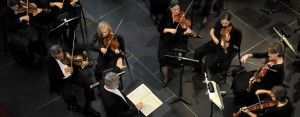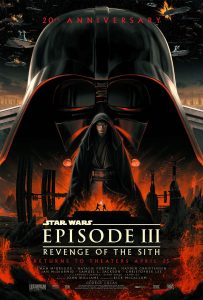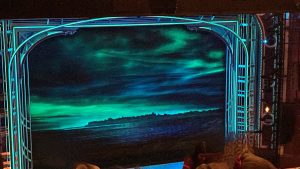 The Bach Festival Society of Winter Park concluded a stellar 80th anniversary season on the weekend of February 28/March 1, with noble performances of timeless music by three German masters.
The Bach Festival Society of Winter Park concluded a stellar 80th anniversary season on the weekend of February 28/March 1, with noble performances of timeless music by three German masters.
The premier choral ensemble of Central Florida made no attempt to restrain its traditional fervor for the masterpieces of “The Three B’s”—Bach, Beethoven, and Brahms represent the pillars of Western art music—and polished its 160-member choir for sold-out performances at Rollins’ Knowles Chapel.
Beethoven’s odd-numbered symphonies seem to have a more popular appeal than the rest. The seventh, with its unparalleled elegance, rich variety in tempo, and an unforgettable second movement, is no exception. Artistic director John Sinclair, celebrating 25 years of service, gave us a sensible reading of Symphony No. 7 on Saturday night. The transition from the sustained walking rhythm of the introduction of the first movement to the quick-paced vivace that follows, where the main themes are presented, was well-defined by his baton and gestures.
The nobility of the slow second movement was elevated. After the main theme was presented by somber chords from strings, countermelodies from woodwinds swiftly joined in. The development that ensued was executed with great skill from the ensemble. The intensity rose gradually to the final forte recapitulation, accompanied by accents from timpani. The strength of the performance was in the balance between the main theme and the underlying figures, an intense combination of expansive harmony and straightforward melodies that makes this one of the single most-revered movements in the Beethoven catalogue.
The greatness of Brahms’ German Requiem is in the union of choral forces with the imagery of the unorthodox text; instead of covering the “Day of Wrath” source material, as is the norm in other requiems (a mass for the dead), the composer picked more serene passages of biblical translations by Luther. The solace of the text is offset by the unbridled force of the choir, though. It was a striking moment of incredible sonic power to hear the full choir blasting “Behold, all flesh is as the grass,” during the second movement.
Sinclair’s handling of the different parts of the soprano-alto-tenor-bass choir was supreme; the emphatic fugue of the third movement wove a tight sound tapestry, with each part clearly defined. The climactic fugue of the sixth movement was equally arresting.
Bass Kevin Deas, of Porgy and Bess fame, sang both the German Requiem and Bach’s Mass in B Minor, the latter performed as a Sunday matinée. The recording artist possesses a captivating and hefty tone, and was as charming in the third movement of the requiem as he was in the arias of the mass. He particular stood out in the “For thou only art holy” section of the mass, with a charming horn accompaniment supporting him.
It is perhaps unusual that Brahms did not include a duet for both soloists for his requiem; however, soprano Julia Foster took the spotlight on the fifth movement and projected a warm tone.
The other soloists for the Bach mass were sopranos Arisa Kusumi and Morgan Davis, mezzo-soprano Laura Pudwell, and tenor Robert Breault. Their appearances echoed the highly polyphonic textures of Bach’s choral parts, and were especially noteworthy in the soprano-soprano, soprano-tenor, and soprano-alto duets.
The choir was as strong as ever, delivering an immaculate execution of the “Lord, have mercy upon us” opening section in the recurring B minor key.
The instrumental accompaniment also had spotlight moments. Flutist Nora Lee Garcia, from the University of Central Florida, delivered a great performance of her obbligato parts, underpinning the soloists, especially in the “Lord God” duet, and the touching aria for tenor, “Benedictus.” With warm, swiftly flowing phrases, Garcia added much to the poignancy of the performance.
Trumpets also deserve recognition for their interplay with full choir during the “Osanna.” The oboe parts by Sherwood Hawkins and Aaron Hilbun, which supported Deas’ solo parts during the “And I believe in the Holy Ghost” section, were equally crisp and heartfelt.
The highlight of these performances was the handling, by conductor and choir members alike, of both Brahms’ and Bach’s complex contrapuntal textures. Supported by excellent instrumental accompaniment, and elevated by Deas’ appearances on both choral pieces, this was a remarkable anniversary weekend for the Bach Festival Society of Winter Park.
The organization’s Visiting Artists series continues on March 29, with a performance by VIDA Guitar Quartet at Tiedtke Concert Hall. For details, visit www.bachfestivalflorida.org.







Be First to Comment